Monographs in Population Biology77
Simon A. Levin, Robert M. Pringle, and Corina E. Tarnita, Series Editors
Monographs in Population Biology (MPB) is an ongoing series of books that examine important aspects of the ecology and evolution of animals, plants, microbes, and the ecosystems in which they exist. Since its launch with MacArthur & Wilson’s Theory of Island Biogeography, the series has published some of the most influential and highly cited books in ecology and evolutionary biology. Today, MPB aims to publish cutting-edge books that emphasize synthesis, embrace theoretical and empirical approaches, integrate across levels, and offer fresh insights and creative new hypotheses. The series welcomes contributions from scholars at any career stage; interested authors may contact acquisitions editor Alison Kalett or the series editors for more information or to submit a proposal.
-
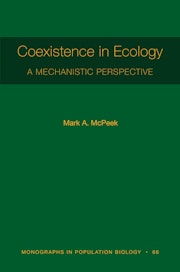
A comprehensive framework for understanding species coexistence
-
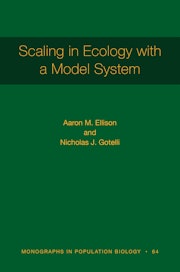
A groundbreaking approach to scale and scaling in ecological theory and practice
-
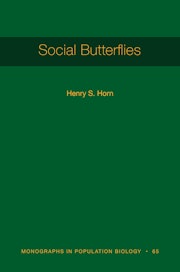
An ecologist's investigation of the social lives of butterflies
-

A plethora of different theories, models, and concepts make up the field of community ecology. Amid this vast body of work, is it possible to build one general theory of ecological communities? What other scientific areas might serve as...
-
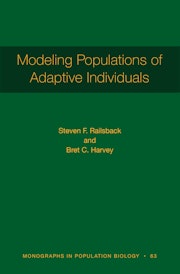
Ecologists now recognize that the dynamics of populations, communities, and ecosystems are strongly affected by adaptive individual behaviors. Yet until now, we have lacked effective and flexible methods for modeling such dynamics....
-
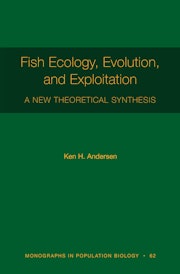
Fish are one of the most important global food sources, supplying a significant share of the world’s protein consumption. From stocks of wild Alaskan salmon and North Sea cod to entire fish communities with myriad species, fisheries...
-
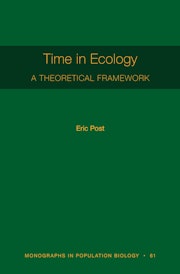
Ecologists traditionally regard time as part of the background against which ecological interactions play out. In this book, Eric Post argues that time should be treated as a resource used by organisms for growth, maintenance, and...
-
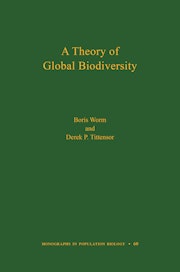
The number of species found at a given point on the planet varies by orders of magnitude, yet large-scale gradients in biodiversity appear to follow some very general patterns. Little mechanistic theory has been formulated to explain...
-
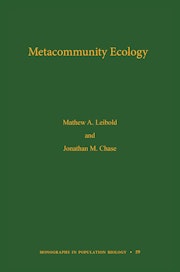
Metacommunity ecology links smaller-scale processes that have been the provenance of population and community ecology—such as birth-death processes, species interactions, selection, and stochasticity—with larger-scale issues such as...
-
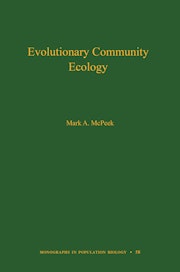
Evolutionary Community Ecology develops a unified framework for understanding the structure of ecological communities and the dynamics of natural selection that shape the evolution of the species inhabiting them. All species engage in...
-
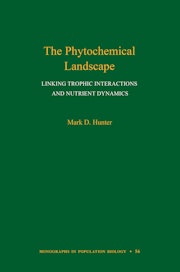
The dazzling variation in plant chemistry is a primary mediator of trophic interactions, including herbivory, predation, parasitism, and disease. At the same time, such interactions feed back to influence spatial and temporal variation...
-
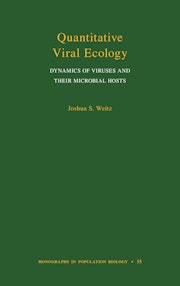
When we think about viruses we tend to consider ones that afflict humans—such as those that cause influenza, HIV, and Ebola. Yet, vastly more viruses infect single-celled microbes. Diverse and abundant, microbes and the viruses that...
-

These notes are based on a course of lectures given by Professor Nelson at Princeton during the spring term of 1966. The subject of Brownian motion has long been of interest in mathematical probability. In these lectures, Professor...
-
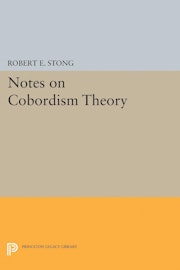
These notes contain the first complete treatment of cobordism, a topic that has become increasingly important in the past ten years. The subject is fully developed and the latest theories are treated.
Originally published in 1968. -
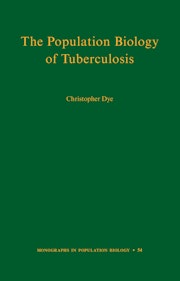
Despite decades of developments in immunization and drug therapy, tuberculosis remains among the leading causes of human mortality, and no country has successfully eradicated the disease. Reenvisioning tuberculosis from the perspective...
-

Encompassing both introductory and more advanced research material, these notes deal with the author's contributions to stochastic processes and focus on Brownian motion processes and its derivative white noise.
Originally published in 1970. -
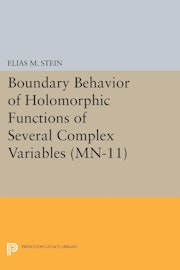
This book has as its subject the boundary value theory of holomorphic functions in several complex variables, a topic that is just now coming to the forefront of mathematical analysis. For one variable, the topic is classical and rather...
-

A sequel to Lectures on Riemann Surfaces (Mathematical Notes, 1966), this volume continues the discussion of the dimensions of spaces of holomorphic cross-sections of complex line bundles over compact Riemann surfaces. Whereas the...
-

This volume offers a systematic treatment of certain basic parts of algebraic geometry, presented from the analytic and algebraic points of view. The notes focus on comparison theorems between the algebraic, analytic, and continuous...
-
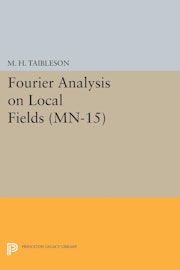
This book presents a development of the basic facts about harmonic analysis on local fields and the n-dimensional vector spaces over these fields. It focuses almost exclusively on the analogy between the local field and Euclidean cases...
-
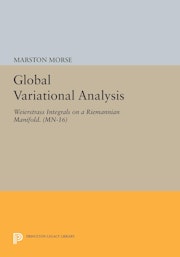
This book builds upon the revolutionary discovery made in 1974 that when one passes from function f to a function J of paths joining two points A1≠A1 the connectivities R1 of the domain of f can be replaced by connectivities R1 over...
-
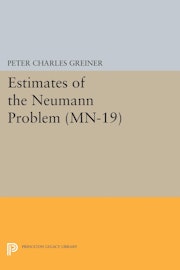
The ∂̄ Neumann problem is probably the most important and natural example of a non-elliptic boundary value problem, arising as it does from the Cauchy-Riemann equations. It has been known for some time how to prove solvability and...
-
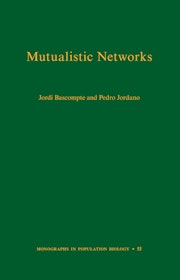
Mutualistic interactions among plants and animals have played a paramount role in shaping biodiversity. Yet the majority of studies on mutualistic interactions have involved only a few species, as opposed to broader mutual connections...
-

Rising temperatures are affecting organisms in all of Earth's biomes, but the complexity of ecological responses to climate change has hampered the development of a conceptually unified treatment of them. In a remarkably comprehensive...
-
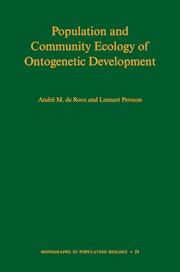
Most organisms show substantial changes in size or morphology after they become independent of their parents and have to find their own food. Furthermore, the rate at which these changes occur generally depends on the amount of food...
-
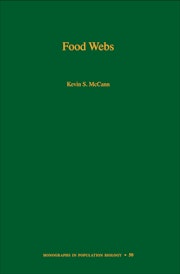
Human impacts are dramatically altering our natural ecosystems but the exact repercussions on ecological sustainability and function remain unclear. As a result, food web theory has experienced a proliferation of research seeking to...
-
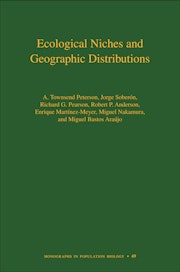
This book provides a first synthetic view of an emerging area of ecology and biogeography, linking individual- and population-level processes to geographic distributions and biodiversity patterns. Problems in evolutionary ecology...
-
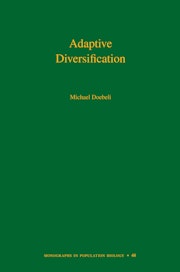
Understanding the mechanisms driving biological diversity remains a central problem in ecology and evolutionary biology. Traditional explanations assume that differences in selection pressures lead to different adaptations in...
-
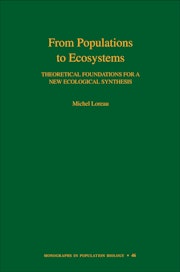
The major subdisciplines of ecology--population ecology, community ecology, ecosystem ecology, and evolutionary ecology--have diverged increasingly in recent decades. What is critically needed today is an integrated, real-world approach...
-
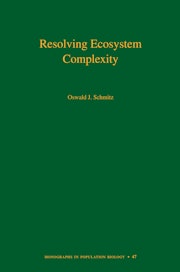
An ecosystem's complexity develops from the vast numbers of species interacting in ecological communities. The nature of these interactions, in turn, depends on environmental context. How do these components together influence an...
-
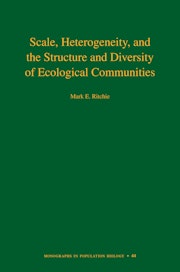
Understanding and predicting species diversity in ecological communities is one of the great challenges in community ecology. Popular recent theory contends that the traits of species are "neutral" or unimportant to coexistence, yet...
-
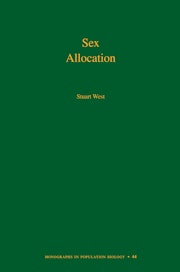
Recent decades have witnessed an explosion of theoretical and empirical studies of sex allocation, transforming how we understand the allocation of resources to male and female reproduction in vertebrates, invertebrates, protozoa, and...
-
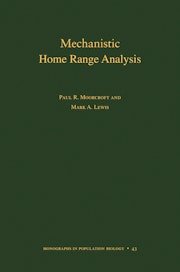
Spatial patterns of movement are fundamental to the ecology of animal populations, influencing their social organization, mating systems, demography, and the spatial distribution of prey and competitors. However, our ability to...
-
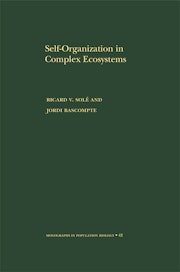
Can physics be an appropriate framework for the understanding of ecological science? Most ecologists would probably agree that there is little relation between the complexity of natural ecosystems and the simplicity of any example...
-

The origin of species has fascinated both biologists and the general public since the publication of Darwin's Origin of Species in 1859. Significant progress in understanding the process was achieved in the "modern synthesis," when...
-

In 1951, the geneticist Luigi Luca Cavalli-Sforza was teaching in Parma when a student--a priest named Antonio Moroni--told him about rich church records of demography and marriages between relatives. After convincing the Church to open...
-
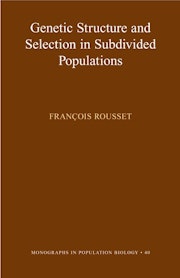
Various approaches have been developed to evaluate the consequences of spatial structure on evolution in subdivided populations. This book is both a review and new synthesis of several of these approaches, based on the theory of spatial...
-
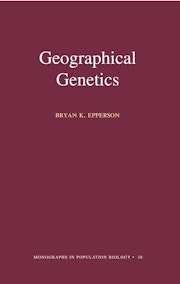
Population genetics has made great strides in applying statistical analysis and mathematical modeling to understand how genes mutate and spread through populations over time. But real populations also live in space. Streams, mountains...
-

The seemingly innocent observation that the activities of organisms bring about changes in environments is so obvious that it seems an unlikely focus for a new line of thinking about evolution. Yet niche construction--as this process of...
-
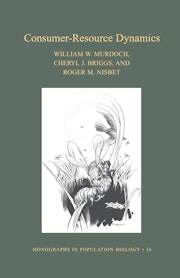
Despite often violent fluctuations in nature, species extinction is rare. California red scale, a potentially devastating pest of citrus, has been suppressed for fifty years in California to extremely low yet stable densities by its...
-
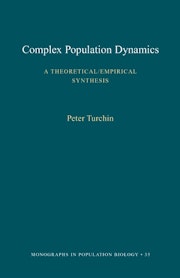
Why do organisms become extremely abundant one year and then seem to disappear a few years later? Why do population outbreaks in particular species happen more or less regularly in certain locations, but only irregularly (or never at...
-
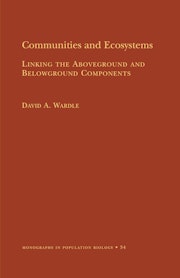
Most of the earth's terrestrial species live in the soil. These organisms, which include many thousands of species of fungi and nematodes, shape aboveground plant and animal life as well as our climate and atmosphere. Indeed, all...
-

Does biodiversity influence how ecosystems function? Might diversity loss affect the ability of ecosystems to deliver services of benefit to humankind? Ecosystems provide food, fuel, fiber, and drinkable water, regulate local and...
-
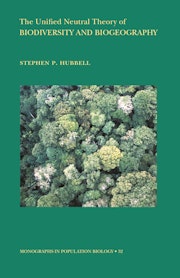
Despite its supreme importance and the threat of its global crash, biodiversity remains poorly understood both empirically and theoretically. This ambitious book presents a new, general neutral theory to explain the origin, maintenance...
-
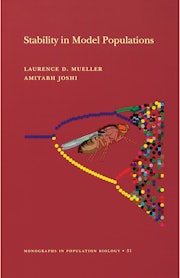
Throughout the twentieth century, biologists investigated the mechanisms that stabilize biological populations, populations which--if unchecked by such agencies as competition and predation--should grow geometrically. How is order in...
-
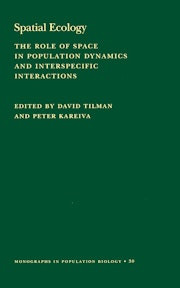
Spatial Ecology addresses the fundamental effects of space on the dynamics of individual species and on the structure, dynamics, diversity, and stability of multispecies communities. Although the ecological world is unavoidably spatial...
-
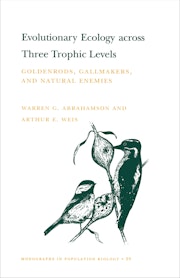
In a work that will interest researchers in ecology, genetics, botany, entomology, and parasitology, Warren Abrahamson and Arthur Weis present the results of more than twenty-five years of studying plant-insect interactions. Their study...
-
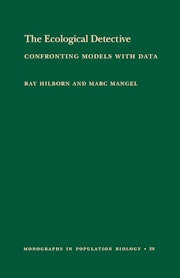
The modern ecologist usually works in both the field and laboratory, uses statistics and computers, and often works with ecological concepts that are model-based, if not model-driven. How do we make the field and laboratory coherent?...
-

Whether in felling trees for wood, rearing insects for biological control, or culling animals for conservation purposes, efficient management of biological systems requires quantitative analysis of population growth and harvesting...
-
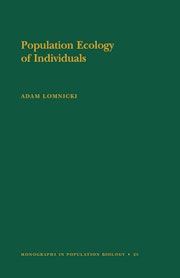
A common tendency in the field of population ecology has been to overlook individual differences by treating populations as homogeneous units; conversely, in behavioral ecology the tendency has been to concentrate on how individual...
-
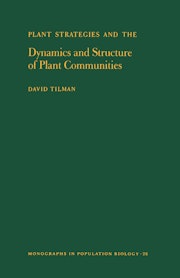
Although ecologists have long considered morphology and life history to be important determinants of the distribution, abundance, and dynamics of plants in nature, this book contains the first theory to predict explicitly both the...
-
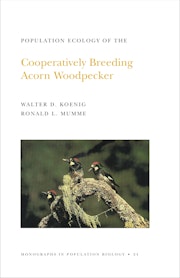
Ever since the acorn woodpecker was observed and described by Spanish explorers, its behavior--particularly the unique habit of caching acorns in specialized storage trees or granaries--has impressed observers. Acorn woodpeckers are...
-

On Knots is a journey through the theory of knots, starting from the simplest combinatorial ideas--ideas arising from the representation of weaving patterns. From this beginning, topological invariants are constructed directly: first...
-

Using only the very elementary framework of finite probability spaces, this book treats a number of topics in the modern theory of stochastic processes. This is made possible by using a small amount of Abraham Robinson's nonstandard...
-
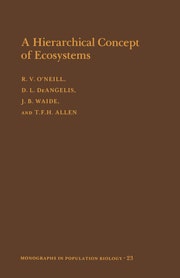
"Ecosystem" is an intuitively appealing concept to most ecologists, but, in spite of its widespread use, the term remains diffuse and ambiguous. The authors of this book argue that previous attempts to define the concept have been...
-
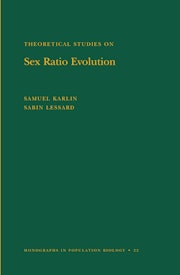
This book deals with a key area of population genetics: the ratio of the sexes in a population, or the allocation of resources to male versus female reproductive function. Samuel Karlin and Sabin Lessard establish the formal theoretical...
-
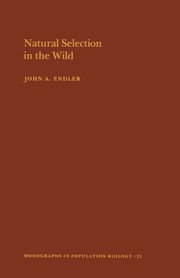
Natural selection is an immense and important subject, yet there have been few attempts to summarize its effects on natural populations, and fewer still which discuss the problems of working with natural selection in the wild. These are...
-
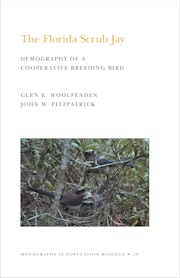
Florida Scrub Jays are an excellent example of a cooperative-breeding species, in which adult birds often help raise offspring not their own. For more than a decade Glen E. Woolfenden and John W. Fitzpatrick studied a marked population...
-

This book maintains that higher plants manifest some degree of sexual selection, and it begins to build a framework that unifies many features of plant reproduction previously considered unrelated. Reviewing evidence for sexual...
-
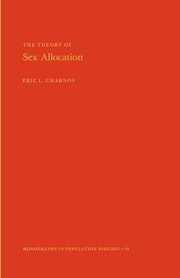
This book is the first comprehensive treatment of sex allocation from the standpoint of modern evolutionary theory. It shows how the determination of sex ratio, resource allocation to sperm versus egg within simultaneous...
-
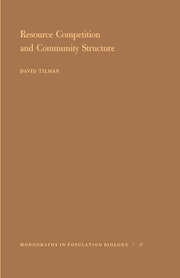
One of the central questions of ecology is why there are so many different kinds of plants and animals. Here David Tilman presents a theory of how organisms compete for resources and the way their competition promotes diversity....
-
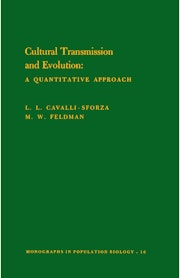
A number of scholars have found that concepts such as mutation, selection, and random drift, which emerged from the theory of biological evolution, may also explain evolutionary phenomena in other disciplines as well. Drawing on these...
-

In spite of the fact that parasites represent more than half of all living species of plants and animals, their role in the evolution of life on earth has been substantially underestimated. Here, for the first time within an...
-
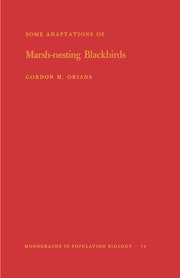
The variety of social systems among the New World blackbirds (Family Icteridae) and the structural simplicity of their foraging environment provide excellent opportunities for testing theorics about the adaptive significance of their...
-

In this pathbreaking and far-reaching work George Oster and Edward Wilson provide the first fully developed theory of caste evolution among the social insects. Furthermore, in studying the effects of natural selection in generally...
-
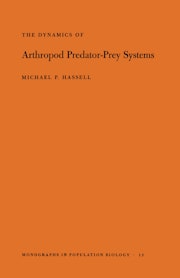
In this study of arthropod predador-prey systems Michael Hassell shows how many of the components of predation may be simply modeled in order to reveal their effects on the overall dynamics of the interacting populations. Arthropods...
-
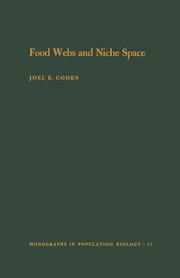
What is the minimum dimension of a niche space necessary to represent the overlaps among observed niches? This book presents a new technique for obtaining a partial answer to this elementary question about niche space. The author bases...
-
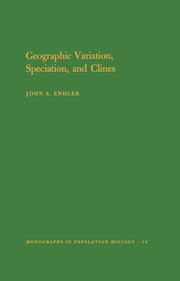
Geographic Variation, Speciation and Clines explores the origins and development of geographic variation, divergence, and speciation. In particular it is concerned with genetic divergence as it is usually found on continents, among...
-
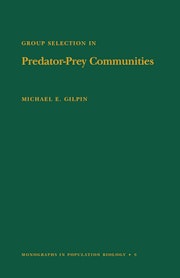
Many animals regulate their population density by patterns of behavior that would be easy to explain if the forces of natural selection acted to optimize group properties. But Darwinian selection acts on individuals, not groups, and...
-
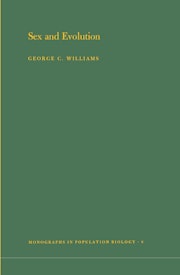
This book explores the relationship between various types of reproduction and the evolutionary process. Starting with the concept of meiosis, George C. Williams states the conditions under which an organism with both sexual and asexual...
-
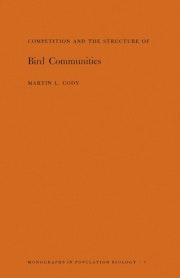
Professor Cody's monograph emphasizes the role of competition at levels above single species populations, and describes how competition, by way of the niche concept, determines the structure of communities. Communities may be understood...
-
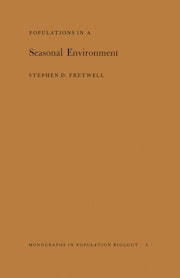
Most organisms live in a seasonal environment. During their life cycles, some species face seasons of cold and heat, aridity and abundant rainfall, migration and stable residence, breeding and nonbreeding. Populations grow and decline...
-

To show the importance of stochastic processes in the change of gene frequencies, the authors discuss topics ranging from molecular evolution to two-locus problems in terms of diffusion models. Throughout their discussion, they come to...
-

Through use of the models Professor Horn has devised, plant ecologists, foresters, and botanists will be able to predict the growth and productivity of a forest, the invading and senile species in a forest, the effect of shade tolerance...
-

Professor Levins, one of the leading explorers in the field of integrated population biology, considers the mutual interpenetration and joint evolution of organism and environment, occurring on several levels at once. Physiological and...
-

The description for this book, Lectures on Vector Bundles over Riemann Surfaces. (MN-6), Volume 6, will be forthcoming.
-
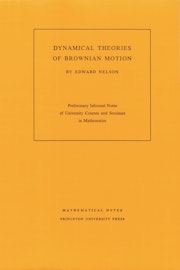
These notes are based on a course of lectures given by Professor Nelson at Princeton during the spring term of 1966. The subject of Brownian motion has long been of interest in mathematical probability. In these lectures, Professor...